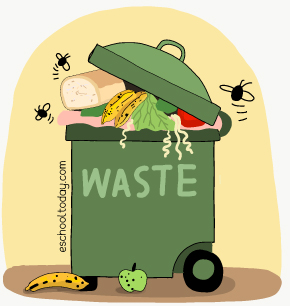- Food waste/loss
Global food loss and food waste.

Food losses and waste are quickly becoming a global issue. Whiles, there are millions of families with children starving, others are living in abundance, with many others carelessly throwing food away.
Many of us have wasted food in one way or the other, but the real food losses and waste matter are bigger than just consumer food waste.
From farming fields and storage places, through transportation, processing, market places, down to consumption places such as homes, schools, restaurants, and workplaces, more than half of all food produced globally goes to waste. This is a tragedy!
Let us take a look at this interesting comparison.
Out of the world’s 9.3 billion people (approx. as of 2011), an estimated 868 million people are chronically under-nourished. This makes it one out of every 8 people. At the same time, a third of global food production goes to waste.
In the UK, 5.6M people live in deep poverty, where basic food provision is a daily challenge; yet at the same time, 15 million tonnes of food is wasted annually, with nearly half discarded within UK households. (1)
In England, for example, schools throw out some 123,000 tonnes of food a year at a cost of £250 million a year. On average, an American student is responsible for 67 pounds of discarded lunch waste every school year. (2)
In developing countries, it takes a lot of man-power to produce food. In more advanced countries, machines and technology are used, but the drain on energy, destruction of vegetative lands, the use of chemicals, and its impact on the environment are phenomenal. Putting all that together, it is clear that a major problem has emerged and we are all in a position to help in one way or the other.
In the next few pages, we shall see more details on how food is wasted and what can be done to minimize this.
Sources
*1 http://www.foodsecurity.ac.uk/assets/pdfs/food-waste-report.pdf, Page 1 of executive Summary
*2 http://www.unep.org/NEWSCENTRE/default.aspx?DocumentId=2814&ArticleId=11110
